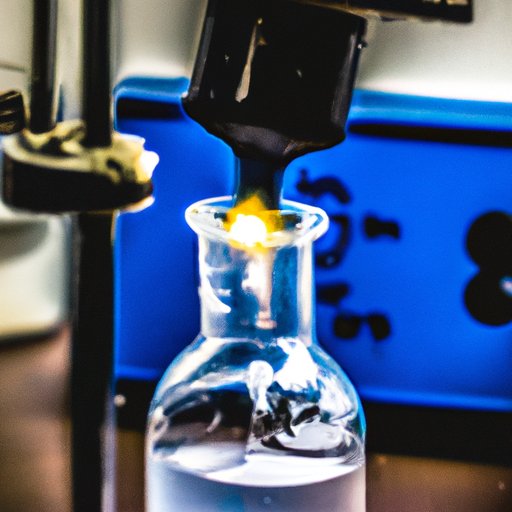Introduction
A current in science refers to the movement of electric charge through a structure or material. This type of energy transfer is often used in many areas of scientific research, such as physics, chemistry, and engineering. In this article, we will explore what is a current in science, the types of currents used in science, the role of currents in scientific research, examples of currents used in scientific experiments, and the benefits of using currents in science.
What are Currents in Science?
A current in science is defined as the flow of electric charge through a conductor or material. This type of energy transfer occurs when electrons move from one atom to another, creating an electrical current. The amount of current that flows through a material depends on the size of the material, the voltage applied to it, and the resistance of the material itself.
There are two main types of currents used in science: direct current (DC) and alternating current (AC). DC is a steady current that flows in one direction, while AC is a variable current that changes directions periodically. Both types of currents can be used in scientific experiments, although AC is more common due to its ability to be easily controlled.

Role of Currents in Scientific Research
Currents play an important role in scientific research. They can be used to measure the properties of materials, such as their conductivity, resistance, and capacitance. Currents can also be used to power devices, such as motors, sensors, and circuits. Additionally, currents can be used to generate heat for experiments, or to induce magnetic fields for research purposes.
The use of currents in scientific research has numerous benefits. For example, currents allow researchers to accurately measure the properties of materials, which can help them better understand the behavior of these materials. Additionally, the use of currents can provide more efficient ways to power devices and generate heat, which can help reduce costs and increase efficiency in experiments.

Examples of Currents Used in Scientific Experiments
One example of a current being used in a scientific experiment is in the area of nanotechnology. In this field, scientists often use currents to manipulate and control tiny particles, such as atoms and molecules. By using currents, scientists can precisely move particles around and create structures on the nanoscale. This type of manipulation can be used to study the properties of these particles, or to build new materials with unique properties.
Another example of a current used in a scientific experiment is in the field of quantum computing. Here, scientists use currents to manipulate quantum bits (qubits), which are the building blocks of quantum computers. By manipulating qubits with currents, scientists can create powerful computers that can perform calculations faster than traditional computers.
Benefits of Using Currents in Science
The use of currents in science offers numerous benefits. One of the most important benefits is the ability to accurately measure the properties of materials. This can help researchers better understand the behavior of these materials, which can lead to new discoveries and applications. Additionally, the use of currents in experiments can also help reduce costs and increase efficiency, as they can provide more efficient ways to power devices and generate heat.
Finally, the use of currents in science can also lead to new technologies and applications. For example, the use of currents in nanotechnology can help create new materials with unique properties, while the use of currents in quantum computing can help create powerful computers that can solve complex problems.
Conclusion
In conclusion, currents are an important part of scientific research. They can be used to measure the properties of materials, power devices, generate heat, and induce magnetic fields. Additionally, the use of currents can offer numerous benefits, such as the ability to accurately measure the properties of materials, reduce costs and increase efficiency, and lead to new technologies and applications. It is clear to see why currents are an essential part of scientific research.
(Note: Is this article not meeting your expectations? Do you have knowledge or insights to share? Unlock new opportunities and expand your reach by joining our authors team. Click Registration to join us and share your expertise with our readers.)
